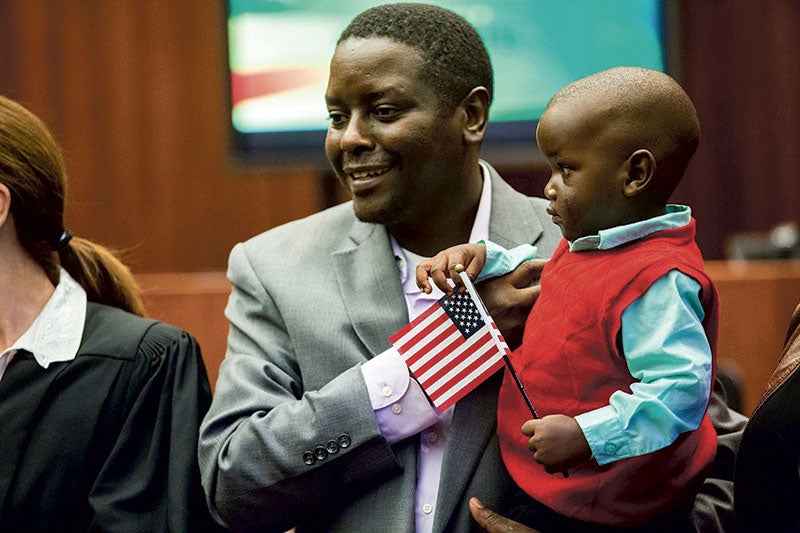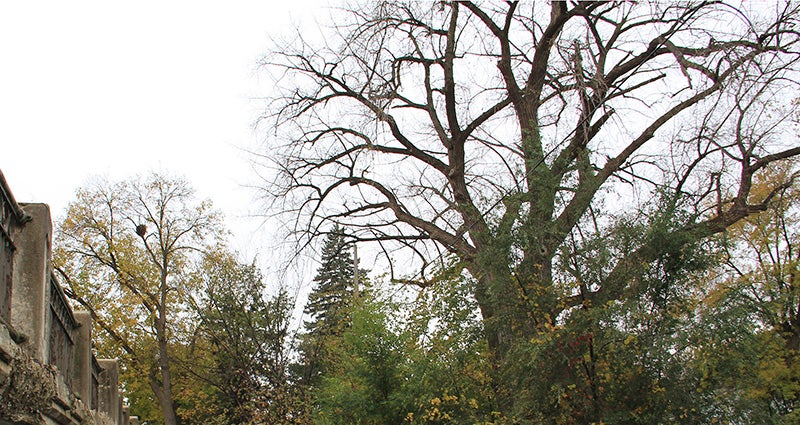Bidding farewell to Red, the Nature Center’s red-tailed hawk
Published 4:59 pm Saturday, February 2, 2013

Red, a red-tailed hawk at the Jay C. Hormel Nature Center, adjusts himself on Julie Champlain's arm. Red, an educational bird with the Nature Center passed away at the age of 33, way beyond the lifespan of hawk growing up in the wild.
Red, the Jay C. Hormel Nature Center’s popular red-tailed hawk, exceeded a lot of expectations as he made it year to year, but ultimately the end did come. Red was humanely euthanized late this past week at the age of 33, far exceeding the normal life-span of a red-tail in the wild.
The popular hawk, always seen these past few years, holding court in a window perch in the basement of the Nature Center, stopped eating in late December last year and after trying to get him to eat and drink on their own, Nature Center executive director Larry Dolphin took him to the Minnesota Raptor Center at the University of Minnesota.
“We wanted to give him one last shot,” Dolphin said. “They said, ‘give us five days to see if we can get him eating.’”
But Red never did get back to feeding and after the five days the decision was made to euthanize him.
“We’re glad we gave him this chance,” Dolphin said. “Just to see where he stood.”
Since 2009 Red fought with liver and heart problems. In fact, it was just after the tornadoes that year the end looked close. Just a day before the storms struck Austin on June 17, 2009, Red was taken to the Raptor Center because he was displaying the same kind of problems he did this December including a green coloring to his droppings that indicated liver problems.
But just as everybody began to make peace with Red’s end the hawk, dubbed ‘a tough old bird,’ by the Nature Center’s Julie Champlin made a big turn around. Even still, the staff of the Nature Center were told not to expect him to make it much longer. There was just too much wrong with him.
“He was there five to seven days,” Champlin said. “They told us then that they thought he wouldn’t make it to the end of 2009. That was their initial diagnosis.”
Even as the expectation of Red’s death hung over the hawk, he just kept defying the odds, continuing to be an educational link between the wild and visitors to the Nature Center.
The decision to euthanize Red this week was made in some ways more difficult by the fact that, other than the not eating or being able to keep food down, he was behaving normally. He was still preening and still chirping at Champlin and Dolphin.
“He was actually acting pretty normal,” Dolphin said. “He actually didn’t seem to be suffering that much.”
Red and his territory
Red came to the Nature Center in 1980 after a family tried raising him on their own. By that time, Red was imprinted on humans which closed the door on being released into the wild.
It was the beginning of Red’s job as an educator at the Nature Center. As an educational bird, The Nature Center was required to update the Department of Natural Resources each year on what Red was being used for each year and that he was meeting the state requirements for an educational bird.
Red presented the opportunity to connect people, particularly students directly to nature and the world of raptors.
“He was a wild ambassador for people who came out here,” Dolphin said. “He helped people make a connection.”
Primarily he was used in the third-grade program the Nature Center runs, but Red educated everyone, even those who just watched curiously through the window as Red stared back at them.
Even though Red was imprinted on humans, it did nothing to curb his territorial ways toward the Nature Center and his sometimes willingness to protect it.
In one of Dolphin’s favorite memories of Red, the day Red escaped.
Sometime in the early 1990s Dolphin was taking Red out, but forgot to secure him to his arm so Red took the opportunity, flew off and perched in a tree.
“We just figured when he’s hungry he’ll come back down,” Dolphin said. “He just stayed up there. He did stay in his territory and stayed relatively close.”
But it wasn’t that simple. Red was loose for about three weeks, and during that time Dolphin noticed people were walking through and putting umbrellas up. Dolphin realized that Red was defending his perceived territory and sometimes swooping down on visitors and knocking hats off.
“He was saying, ‘this is my territory,’” Dolphin said laughing. “I thought, ‘what do we do here?’”
Eventually Red abandoned his territorial defense for a rat and the event passed, but it wasn’t the last time he escaped. Sometimes the fire department was called out to help get him out of the tree.
The opposite sex
For reasons nobody has ever been able to fully explain, Red harbored a clear hatred for women. At best, all that could be hoped for was a tolerance — tolerance enough to let a woman handle him and feed him.
Champlain is one of the few women Red honored with his patience and though she enjoyed a lot of time specifically spent with Red, she could only offer her theory on why Red wasn’t hostile toward her.
“I think I’m an alpha female,” Champlain explained. “Bob Murphy introduced me to Red and it was a slow introduction. I just didn’t show any fear. I still think it’s a mystery — maybe I was just naive and assertive enough.”
But that was rare. Dolphin remembered a time when he watched former intern Laura Schmidt, seven months pregnant, come walking back to the visitor’s center with no shoes on after tending to Red.
“I asked her, ‘why’ are you walking around without shoes?’” Larry said.
It turned out that Red had left his perch and attacked her feet during the feeding and wouldn’t let go. The only option was for Schmidt to slip out of her shoes and simply leave them to Red’s wrath.
Red’s lasting impression
Dolphin thought back to the last time he interacted with Red after taking him to the Raptor Center. As the vet went to take Red, Dolphin remembered the hawk holding on a little tighter to Dolphin. Dolphin’s voice became a little softer when he talked about it.
“I’ve always been his dad,” Dolphin said.
There are few who came in contact with Red that weren’t influenced in some way by the bird. By all accounts, he was one of the oldest living red-tailed hawks in the state of Minnesota. There is no official account though on whether he is the oldest, or another hawk, possibly at the Minnesota Zoo claims that honored. Either way, his years on this Earth were something to marvel at.
“The oldest recorded hawk we know of in the wild lived to be 21,” Champlain, who worked with Red for 25 of those years, said.
During those years Red left his mark on Champlain.
“I will remember with love and respect the special place Red filled in my life for 25 years,” she said. “We developed a bond of trust during the many years he was here. His journey came to an end this January, but his legacy as a true ambassador for his species will live on in the hearts of the people who met and cared for him.”
Among those few to directly handle Red, Maria Anderson was fairly new but like Champlain, he was one of the few women who Red tolerated.
“When I started working at the Nature Center, Larry and Julie told me that Red didn’t get along very well with women,” she said. “When I first entered his territory he screamed in my face. I was determined not to let him get away with that.”
“It was rewarding to get to a point where I could clean around him without upsetting him and to eventually build up the mutual trust to be able to hold him on my arm,” she said.
Dolphin remembered the overall effect of Red on the community just as Champlain does.
“He’s been a wonderful ambassador,” Dolphin said. “He’s been the longest working employee of the Nature Center and he was paid with mice.”
To some though he was more than an ambassador. He touched those had the chance to see him through a window and gave them a sense of the wild. For Champlain he was more than just that simple connection. He was, in a lot of ways, a friend.
“I truly believe that although Red’s life was not in the wild, he touched thousands of lives in his 33 years at the JCHNC,” Champlain said. “Red taught us about the power of raptors with his keen eyesight, razor-sharp talons and beautiful brown and red plumage, which leaves a lasting impact.”
A memorial service for Red’s cremated remains will be held at a later date.




